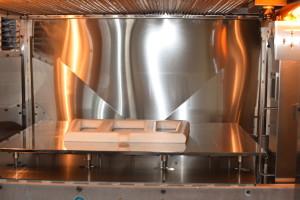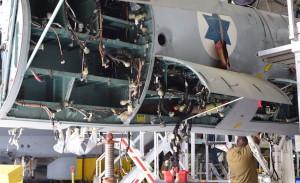Israeli Air Force Keeps Their Old Planes Active With 3D Printing Technology
Although 3D printing is a relatively new technology within the military-industrial complex, it has impacted Israel’s aerospace developments in a great number of ways. Last year, the Israeli military had 3D printed their own drone components, and even started a consortium with the government to focus on 3D printing with titanium. Now, the Israeli Air Force’s Aerial Maintenance Unit (AMU) is utilizing 3D printing technology to help repair their aged and worn down fleet of F-15 fighter jets, which were acquired by the IAF in 1980, and have been used in various missions ever since.
The F-15 aircraft has provided the Israeli military with decades of exceptional operation, and was even used recently during the military’s 2014 combat mission, Operation Protective Edge. But in order to keep these fighter planes functionally relevant, the AMU must focus on manufacturing replacement parts and upgrading their aircraft equipment with the help of their in-house 3D printers. Working out of the Tel Nof Air Base, which is located in central Israel, the AMU is seen as the home for damaged and outdated aircraft. Instead of disposing of these older planes and helicopters, and opting to spend millions on new aircraft and their components, the AMU repairs and enhances these older fleets for modern use.
“A new plane can cost tens of millions of dollars, and the delivery time can take years. We don’t have the money or the time to spend on such projects,” said one senior officer associated with the AMU. “Here in this unit we can turn an old plane into something that is quite capable of competing on the battlefield with new planes, and in fact we can ensure that these planes will remain competitive and mission-worthy for another decade.”
Before the AMU is able to upgrade the technology within these older aircraft, they must first replace these hard-to-find parts to ensure that they’re structurally and operationally sound. In order to make replacement parts for their 30-year-old F-15s, the AMU uses a 3D camera to produce a 3D model of the specified part, and in a matter of hours, the team can have that exact component 3D printed. Before the AMU had access to this 3D printing technology, producing replacement parts for older aircraft was a lengthy and trying process. The unit had to rely on engineers to specify each replacement part, which then went through the hands of their designers and manufacturers, which generally took months and exhausted all of the factory resources.
Although metal 3D printing is widely used across the aerospace industry, the AMU has actually been printing their replacement parts with plastic polymer materials, which not only show material strength equal to aluminum, but also perform adequately while operating in midair. Still, the IAF is currently working with the Ben-Gurion University and the Office of the Chief Scientist to develop their own metal printers, particularly for use with titanium.
It’s not just replacement parts that keep these aircraft relevant, but also the implementation advanced equipment and improved systems, which includes enhanced engines, communication devices, radar systems, and more. According to the senior officer, the F-15 has been able to remain in the IAF fleet due to two of these upgrades. Although, for the IAF, developing a new fighter plane seems to be out of the question at this point in time, 3D printing technology has enabled them to recreate their older aircraft, making them not just as good as new, but oftentimes better than ever before. Discuss this method for maintaining aircraft in the 3D Printing Parts for Older Israeli Military Planes forum over at 3DPB.com.
[Source/Images: IAF, via The Times of Israel]Subscribe to Our Email Newsletter
Stay up-to-date on all the latest news from the 3D printing industry and receive information and offers from third party vendors.
Print Services
You May Also Like
3D Printing Financials: Prodways Ends 2024 with a Profit
After a tough couple of years, Prodways (EPA: PWG) is starting to bounce back. The French 3D printing company finally made a profit in 2024, improved its operating performance, and...
Blue Origin & Auburn University Use EOS M290 to Study Copper 3D Printing
Blue Origin, the commercial space company built off of investments from Amazon founder Jeff Bezos, has donated two EOS M290 powder bed fusion (PBF) printers to Auburn University’s National Center...
Rocket Lab to Acquire Restructured Laser Communications Provider Mynaric AG
Rocket Lab USA, the Long Beach-based, end-to-end space services company that specializes in producing rockets with additive manufacturing (AM), has announced plans to acquire Mynaric AG, a German provider laser...
3D Printing Financials: Stratasys Ends 2024 with Cost Cuts and Growth Plans
Stratasys (Nasdaq: SSYS) has wrapped up 2024 with stronger margins but a full-year net loss. The polymer 3D printing leader navigated a year of economic headwinds, restructuring efforts, and shifting...






























